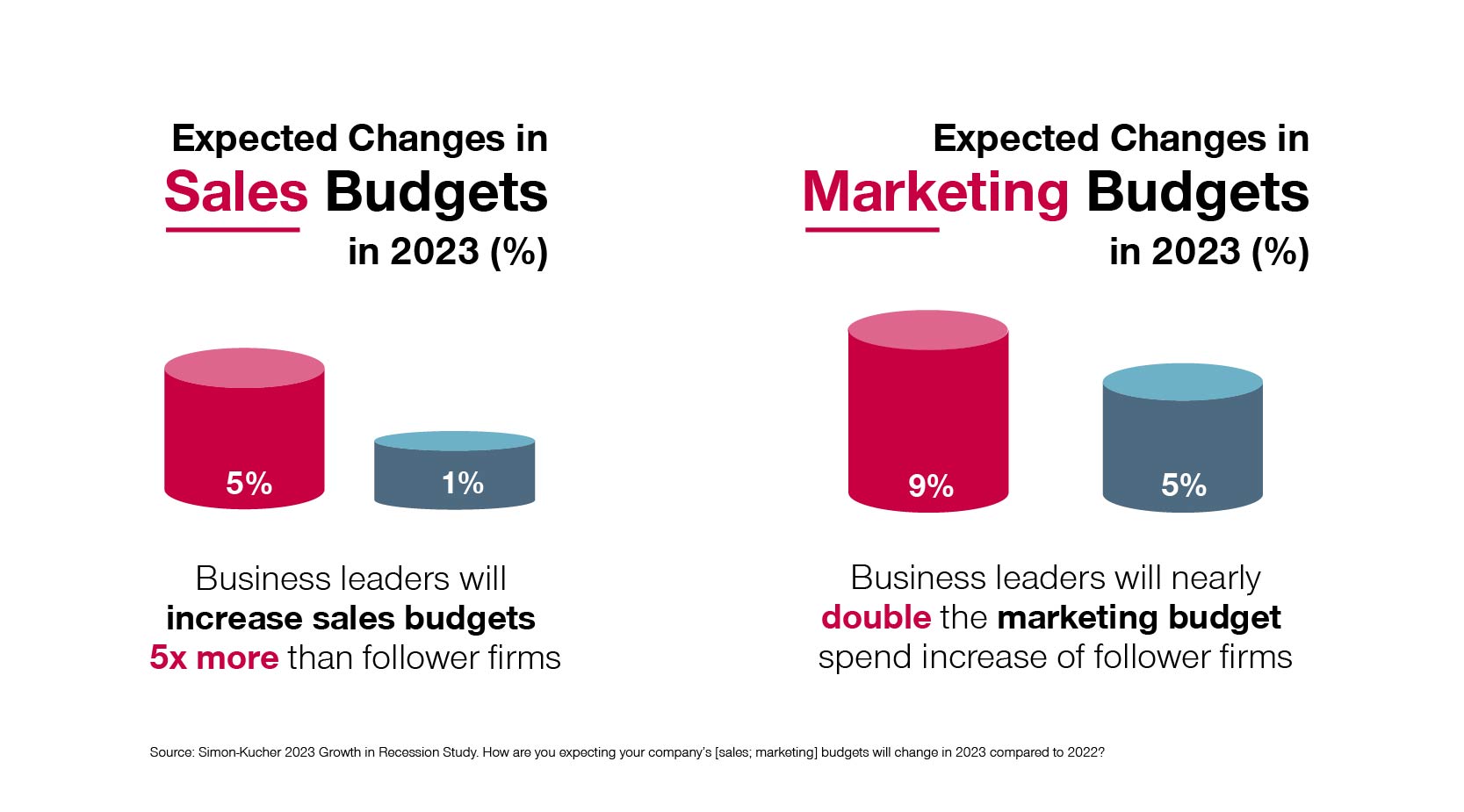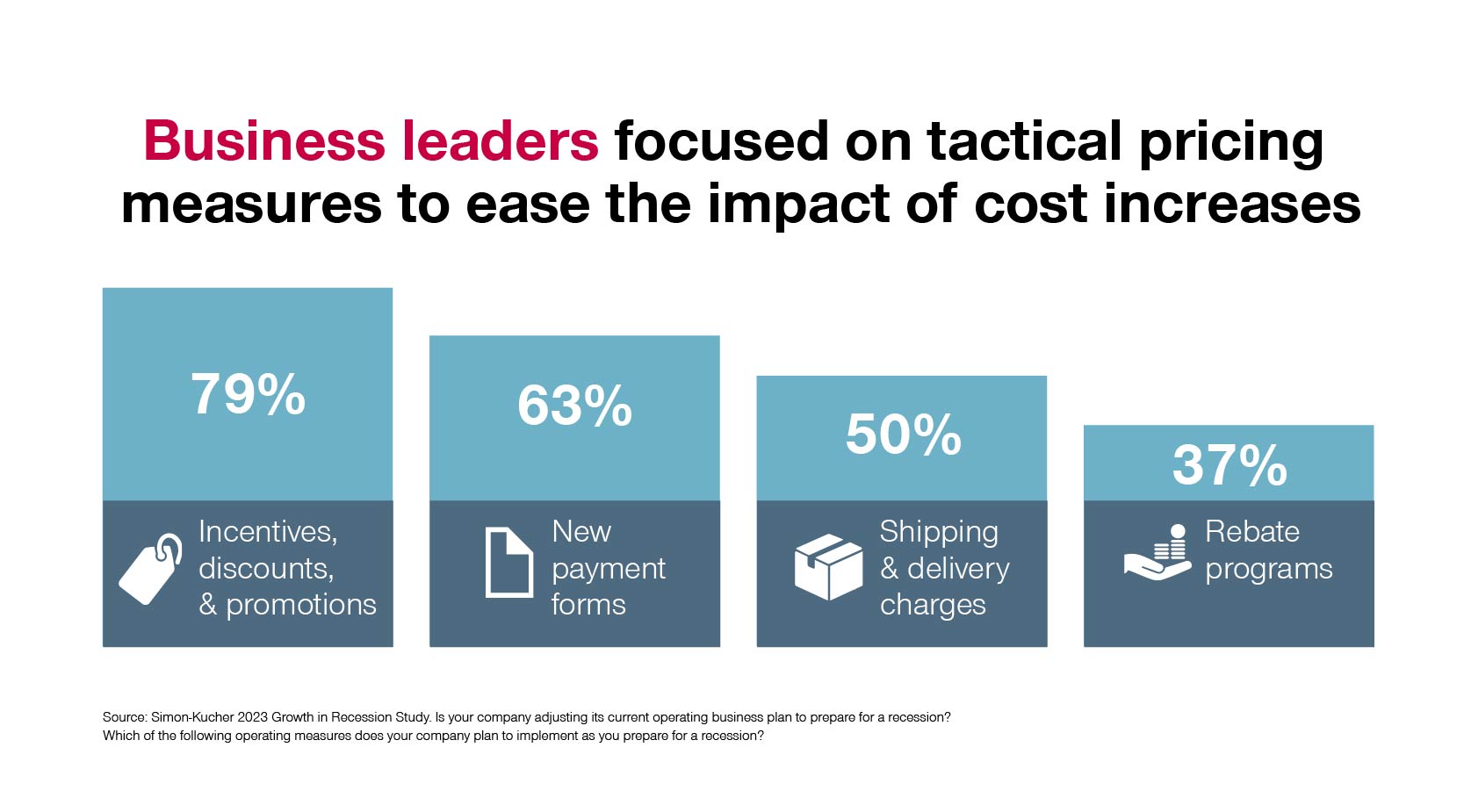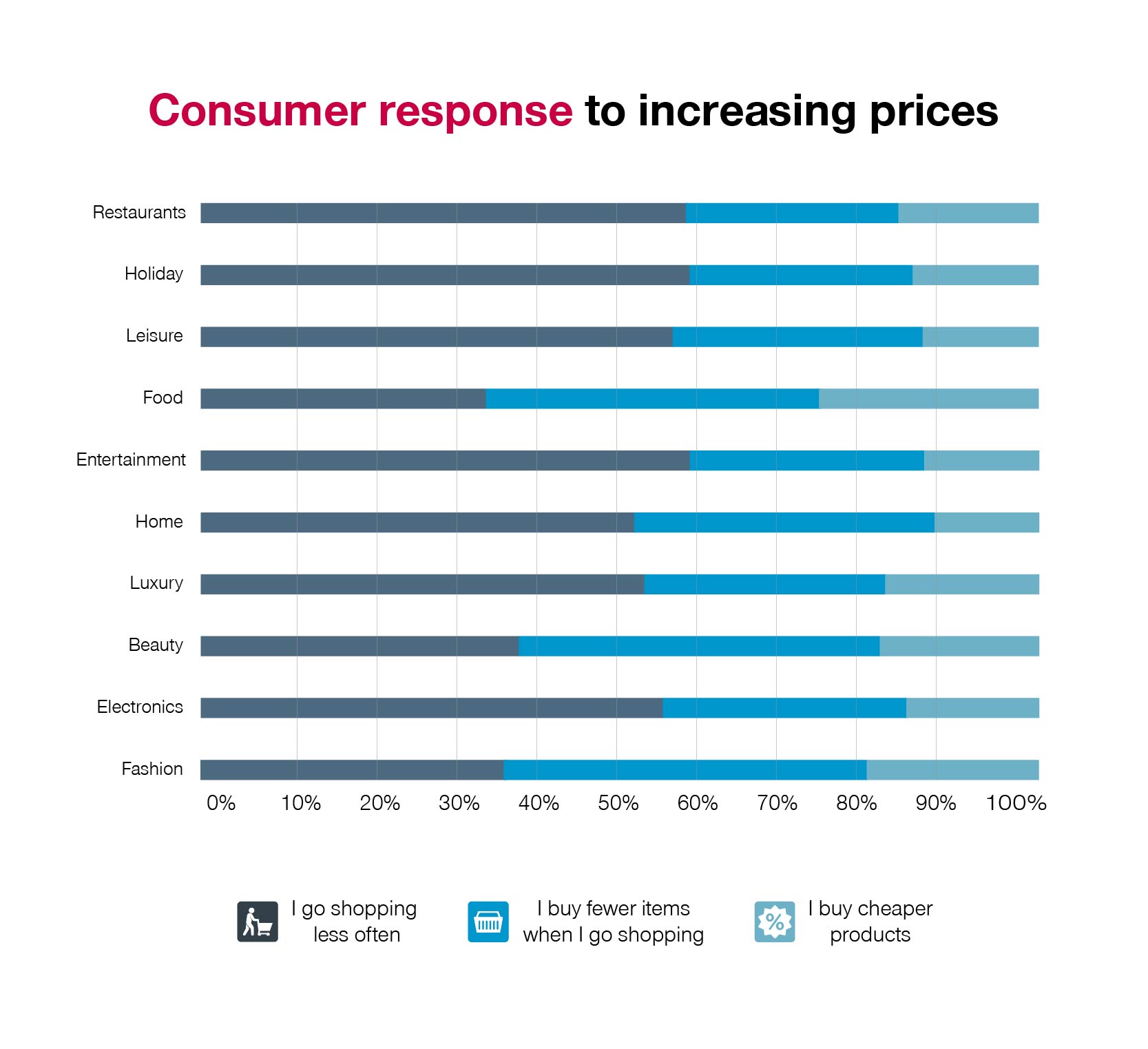In the first installment of our Growth During Volatility series, we took a deep dive into how B2C executives should manage their growth plans at a time when the macroeconomic environment is constantly evolving. But what are the tactics consumer business leaders should be focusing on to ensure balance between consumer needs and expectations, and a business’ survival and growth?
In part two of this 3-part series, we discuss how B2C companies can apply tactics in pricing, sales, and marketing to edge out competitors and find success during times of volatility. Consumer business executives must continue to invest in sales and marketing budgets and apply them strategically. Similarly, leaders must know how to respond quickly to address and capitalize on changing consumer spending behaviors.
Investment in pricing, sales, and marketing will be pivotal for growth during recessionary times and beyond
As business executives continue to feel pricing pressure and rising costs, consumer companies can utilize sales and marketing investments to tactically alleviate anticipated price increases. In our study, businesses showed how important sales and marketing is in their planning and a clear demonstration of where business leaders effectively invest their budgets. When it comes to sales and marketing, the median increase in sales budgets from growth leaders is five times that of other businesses; similarly, the median increase in marketing budgets from the growth leaders is double that of other businesses. Marketing campaigns and sales initiatives, such as improving sales force agility and digitalizing sales processes, can prove integral to finding growth amid hardship.

While these strategies will be effective, a robust approach that delivers to customers’ desire for added discounts will prove beneficial in catching their attention and checking out. The majority (79%) of our growth leaders plan to employ tactical methods like promotions and discounts to blunt price increases. Tactical discounting, rebates, and incentives can help alleviate consumer pain from price hikes, especially upon initial impact. Introducing new payment forms (of which 63% of growth leaders plan to pursue), as well as optimizing shipping and delivery charges (of which 50% of growth leaders plan to pursue), can help preserve margins, reduce pricing impact, and make companies more able to navigate the whims of new and ever-changing consumer behaviors.

How to respond when consumers are reacting
As a result of increased prices and, in turn, reduced spend, consumers plan to shop less often and reduce the size of their shopping baskets. To a lesser extent, some consumers also plan to trade down future purchases from more expensive products and services to cheaper alternatives.

- Consumer Reaction: Consumers will reduce purchase frequency, particularly by reducing the number of purchases of experiential goods and services (e.g., holiday/travel, entertainment, restaurants, and leisure) and big-ticket products like electronics and luxury goods.
- Response Objective: Focus on getting customers “in-the-door” either in-person or online to boost the frequency of purchase in the most-optimal ways to preserve margins.
- Response: Employ tactics like store-wide promotions and discount campaigns, especially at key commercial moments.
- Response: Introduce or optimize loyalty programs and CRM based on the number and frequency of purchases and visits, supported by efforts to build awareness and conversion while clearly educating members on incentives.
- Consumer Reaction: Consumers will reduce the number of items purchased during shopping visits, most prominently in their basket sizes for lifestyle goods like beauty, fashion, and home.
- Response Objective: Focus on incentivizing the increasing shopping basket sizes, while ensuring the maintenance of margins.
- Response: Introduce or optimize escalatory discounting for larger basket sizes (e.g., spend $50, save $5; spend $100, save $15) or product combinations (e.g., buy a cleanser and a moisturizer, get a free lip balm).
- Response: Reduce, eliminate, or optimize shipping/delivery charges over certain optimal basket sizes (e.g., free shipping over $100).
- Response: Invest in training, enabling, and incentivizing sales associates to cross-sell more products or services in-store.
- Response: Invest in the customer journey and experience to optimize cross-sell of more products or services online (e.g., buying a tee-shirt, buy these items [pants, shoes, necklace] to complete the outfit; introduce discount triggers).
- Consumer Reaction: Consumers will trade down from premium or standard goods and services to cheaper alternatives, most notably with food purchases, as well as lifestyle goods (e.g., fashion, beauty, and luxury).
- Response Objective: Prepare to match consumer behavior shifts by incorporating cheaper alternatives into your product or service line-up and incentivize upselling to prevent downtrading.
- Response: Introduce value products into your line-up to prevent customers from switching to cheaper or white-label competitors.
- Response: (for retailers) Introduce private or white-label products to capture additional greenspace in demand toward cheaper alternatives.
- Response: Introduce and advertise the inclusion of “buy now, pay later” payment forms, like Klarna or Afterpay to make standard or premium products more accessible to consumers.
- Response: Invest in training, enabling, and incentivizing sales associates to up-sell products or services in store through optimized sales incentives and rewards.
- Response: Invest in customer journey and experience to optimize up-sell of more standard or premium products or services online (e.g., when a consumer has a value product in their shopping cart, trigger a special offer of the premium product at a discount with associated value messaging; use premium products as personalized or “similar customers searched for” product suggestions).
During this time of volatility and ever-changing consumer purchasing behaviors, there are no easy wins for B2C executives. All business leaders need to be agile in taking decisive and strategic actions to best respond to changing consumer spending habits in order to secure margin preservation and topline growth.
In the next installment of the US Growth During Volatility Series, our experts will deliver a framework of pricing, marketing, and sales tactics, from immediate actions through long-term levers, to best address the dynamic economic environment, find opportunity during hardship, and build a foundation for sustainable, long-term growth.
Contributing Authors:
- Landon Echols, Manager
- Kevin Mulumba, Senior Consultant

